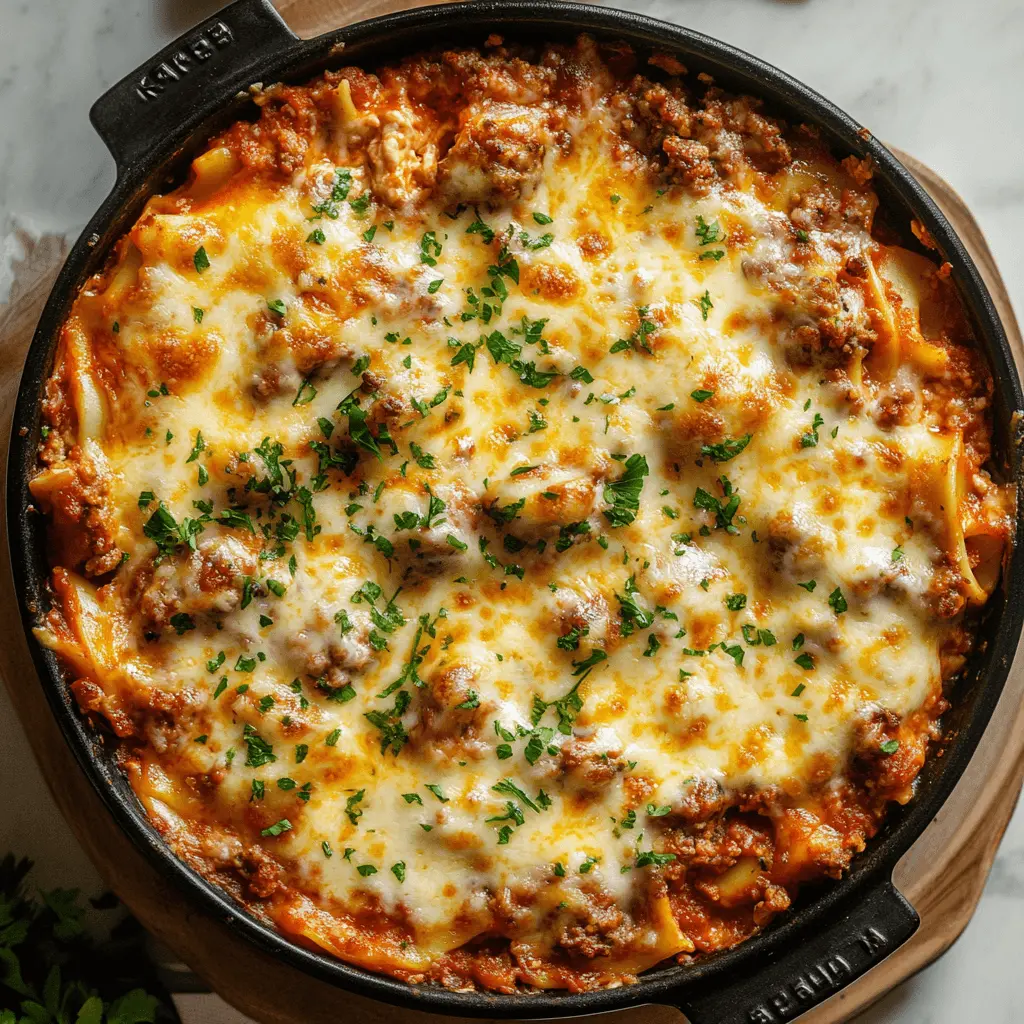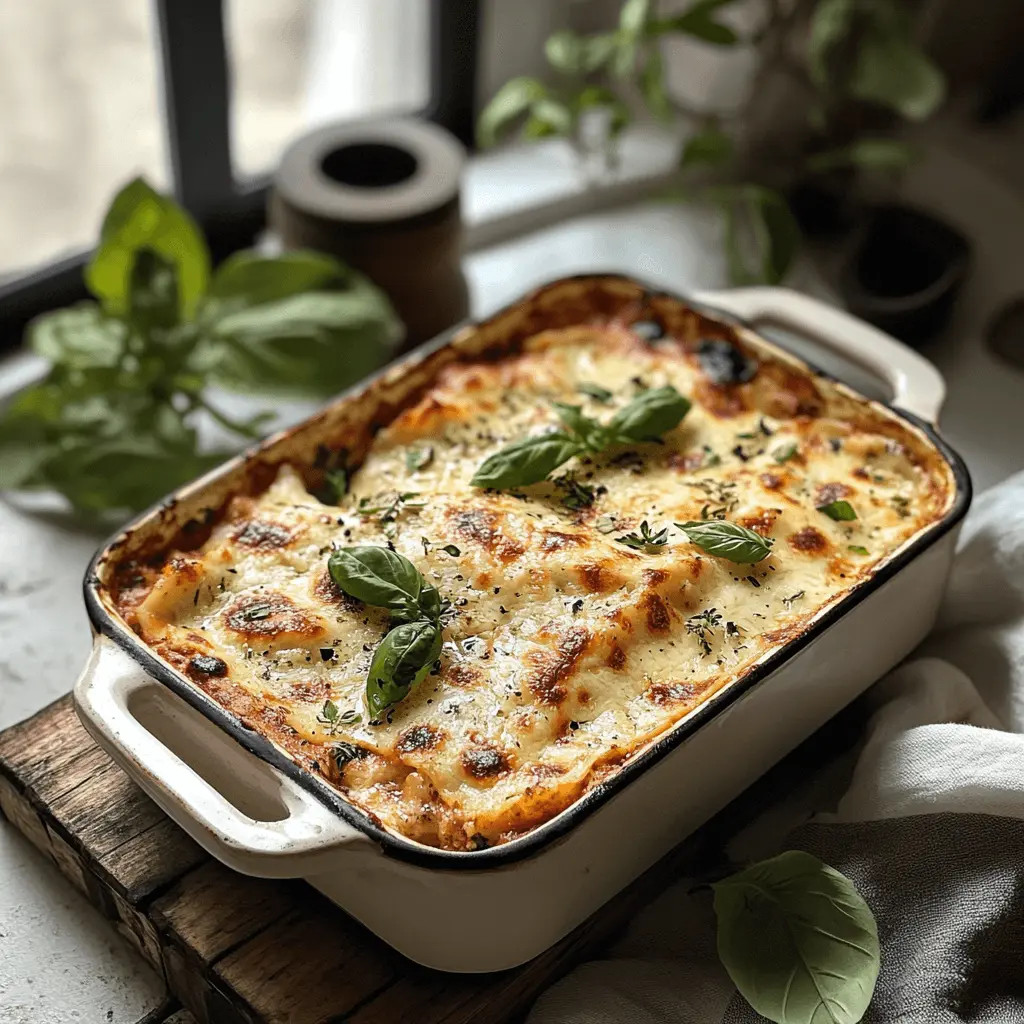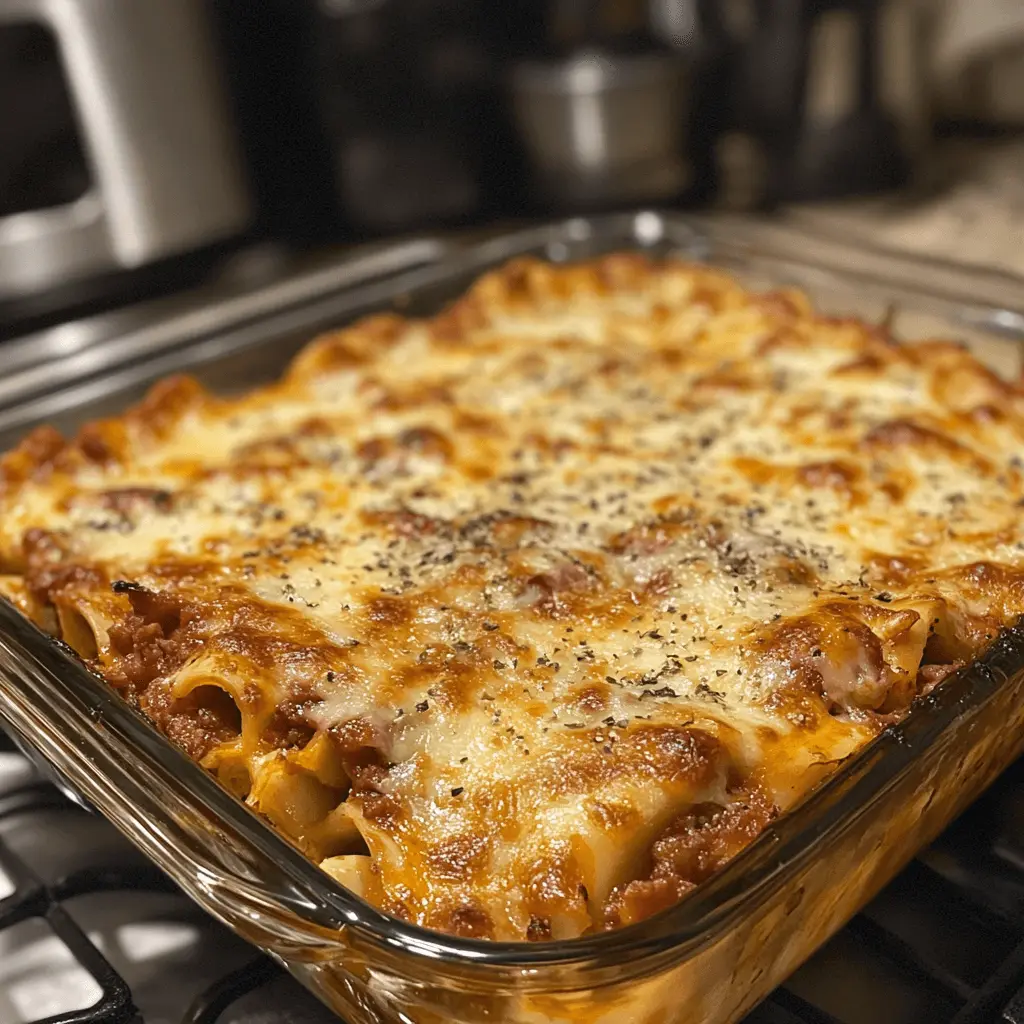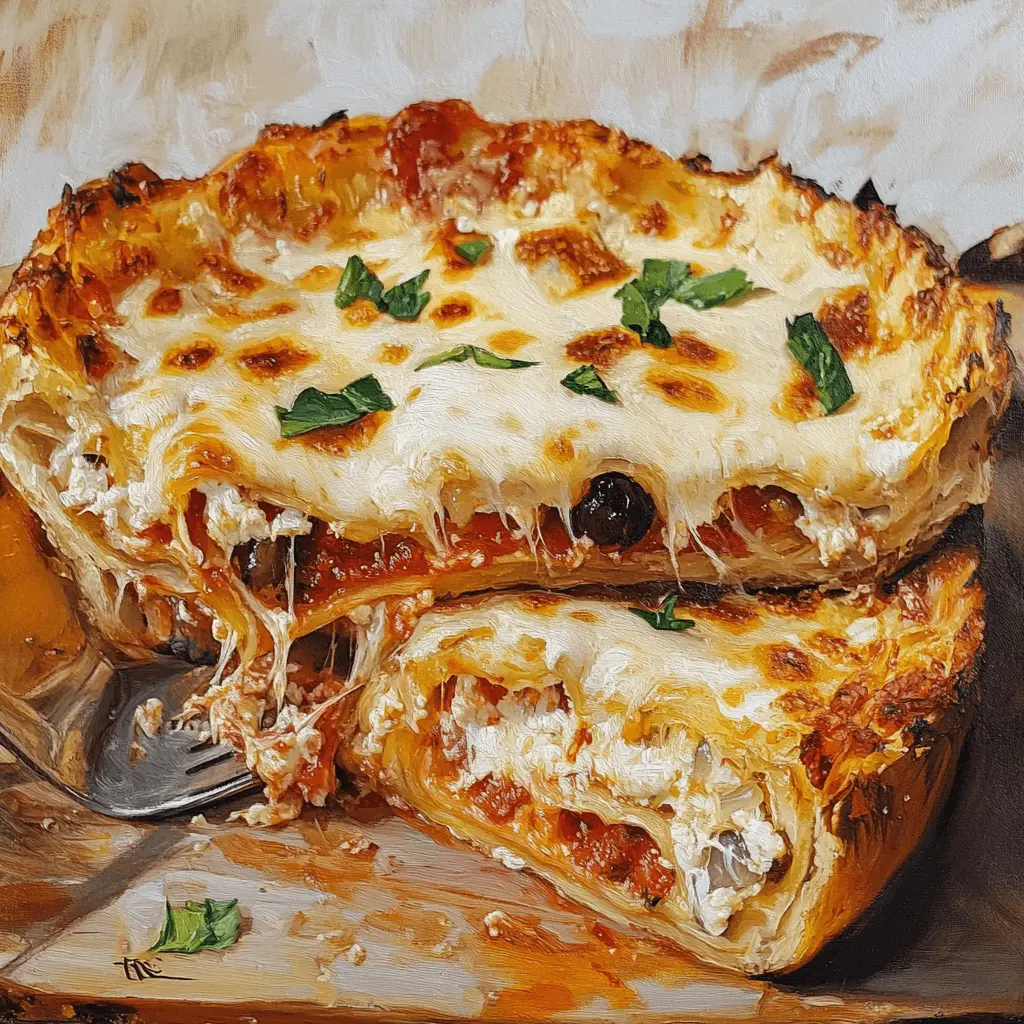Welcome to the ultimate lasagna guide that promises not just to satisfy your taste buds but to transport you to the quaint trattorias of Italy with every bite. Lasagna, a beloved classic in the realm of Italian cuisine, has won hearts globally with its rich layers of cheese, pasta, and sauce. Whether it’s a cozy family dinner or a festive gathering, lasagna stands out as a centerpiece dish, beloved for both its comforting warmth and its versatile nature.
In this post, I’ll take you through a detailed, step-by-step guide to creating the perfect lasagna with layers that meld into a symphony of flavors. This isn’t just any lasagna recipe; it’s a journey through selecting the right ingredients, mastering the layering technique, and achieving that golden, bubbly cheese topping that makes your heart skip a beat. From the best cheeses to the ideal bake settings, get ready to elevate your cooking game and impress at your next meal.
So, grab your apron, and let’s dive into the art of making the ultimate lasagna that might just become your new favorite recipe!
Ingredients You’ll Need for Your Lasagna

The Best Cheeses for Layering
Cheese is the heart of any lasagna, providing both flavor and that irresistible melty texture. For the ultimate lasagna, a trio of cheeses works best:
- Ricotta Cheese: This creamy, mild cheese is the base layer of your lasagna. It blends smoothly with herbs and adds a light, fluffy texture. For best results, mix one cup of ricotta with an egg to help it set during baking, and season with salt and pepper.
- Mozzarella Cheese: Known for its excellent meltability, mozzarella adds the stretchy, gooey texture everyone loves. Use freshly shredded mozzarella for better melting and flavor. Layer it generously between the pasta sheets and on top for that golden top layer.
- Parmesan Cheese: Aged Parmesan brings a sharp, nutty flavor that balances the richness of the other cheeses. Sprinkle grated Parmesan along with each cheese layer and on top before baking to add a crispy, flavorful crust.
For those with different dietary preferences, consider using vegan cheese alternatives or lactose-free cheeses. They can vary in flavor and melting characteristics, so it might be worth experimenting with brands to find the right one for your lasagna.
Selecting the Right Meat and Sauces
The meat sauce is what truly defines the flavor profile of your lasagna:
- Meat Choices: Traditional lasagna usually features ground beef for its rich flavor, but ground pork is a great alternative for a slightly sweeter taste. You can also mix both meats for a deeper flavor complexity. Ensure the meat is browned nicely to enhance its texture and flavor in the sauce.
- Preparing the Sauce: Start with sautéing garlic and onions in olive oil until they’re translucent. Add the ground meat and cook until it’s browned. Stir in tomato paste and crushed tomatoes, along with fresh herbs like basil and a bay leaf. Simmer the sauce for at least 30 minutes to allow the flavors to meld beautifully. Season with salt and pepper to taste.
This homemade meat sauce not only enriches your lasagna with flavor but also ensures the right consistency that won’t make your layers soggy.
Choosing Lasagna Noodles
The choice of noodles impacts the texture of your lasagna:
- No-Boil Noodles: These are a time-saver and absorb moisture from the sauce as they cook, making them a convenient option. Ensure your sauce is slightly runnier if using no-boil noodles, as they require more liquid to cook properly.
- Traditional Boil Noodles: For those who prefer the classic approach, boil the noodles just until they’re al dente. To prevent them from sticking together or becoming too soft, you can add a bit of olive oil to the boiling water and stir gently. After boiling, lay them flat on a sheet to cool before assembling.
Both types of noodles have their benefits, and your choice might depend on the time you have available or the texture you prefer in your lasagna.
Step-by-Step Guide to Assembling Your Lasagna

Preparing the Ingredients
Proper preparation of each component is key to a delicious lasagna:
- Preparing the Meat Sauce: Start by heating a large skillet over medium heat. Add a tablespoon of olive oil, followed by finely chopped onions and minced garlic, sautéing until they are soft and translucent. Add your choice of ground meat (beef, pork, or a mix), breaking it apart with a spoon as it cooks until browned. Stir in tomato paste, crushed tomatoes, and fresh herbs like basil and oregano for depth of flavor. Let the sauce simmer for at least 30 minutes to develop a rich taste, stirring occasionally. Season with salt and pepper.
- Mixing the Cheeses: In a separate bowl, combine ricotta cheese with an egg, which helps bind the cheese layer. Add a pinch of salt, freshly ground black pepper, and a touch of nutmeg for warmth. Mix until smooth. Grate mozzarella and Parmesan cheeses, keeping them ready to layer.
- Cooking the Noodles: If using traditional boil noodles, bring a large pot of salted water to a boil. Add the noodles and cook until al dente, usually about one minute less than the package instructions to prevent overcooking in the oven. Drain and lay the noodles flat on a sheet of aluminum foil or parchment paper to stop them from sticking together.
Layering Your Lasagna
Layering correctly is crucial for that perfect slice of lasagna:
- First Layer: Spread a thin layer of meat sauce over the bottom of your baking dish to prevent the noodles from sticking. Place your first layer of noodles over the sauce.
- Cheese and Sauce Layers: Over the noodles, spread a generous layer of the ricotta mixture, followed by a sprinkle of mozzarella and Parmesan. Cover with a layer of meat sauce. The key is to ensure each layer is moist but not overly wet, which helps cook the noodles and melds the flavors together.
- Repeat: Repeat the layers—noodle, ricotta, mozzarella, Parmesan, and meat sauce—until all ingredients are used up, finishing with a top layer rich in cheeses.
Baking Tips for Perfect Lasagna
Baking your lasagna correctly will make all the difference:
- Oven Settings: Preheat your oven to 375 degrees Fahrenheit (190 degrees Celsius). This temperature allows the lasagna to cook through and the cheese to become beautifully golden without burning.
- Baking Time: Cover the lasagna with aluminum foil to prevent the cheese from burning and the top from drying out. Bake covered for 25 minutes, then remove the foil and continue to bake for another 25 minutes to allow the cheese on top to become crispy and golden.
- Resting: Once removed from the oven, let the lasagna rest for at least 15 minutes before slicing. This resting period allows the layers to set, making it easier to cut and serve neat portions.
Additional Tips and Variations

Making Vegetarian Lasagna
Creating a vegetarian lasagna doesn’t mean compromising on flavor or texture:
- Vegetable and Protein Choices: Opt for a mix of mushrooms, spinach, zucchini, bell peppers, and onions, all finely chopped and sautéed until tender. For added protein, consider incorporating plant-based meat substitutes, such as lentils or textured vegetable protein, which provide a meaty texture and absorb flavors well.
- Adjusting the Sauce: Use the same base for your tomato sauce but add more herbs like basil, oregano, and thyme to enhance the vegetables’ natural flavors. A dash of red wine can also deepen the sauce’s richness, even without meat.
- Spices and Seasoning: Vegetarian dishes benefit from a careful balance of spices. Consider adding a pinch of chili flakes for a little heat or smoked paprika for a subtle smoky flavor. This helps elevate the overall taste and complexity of the dish.
Gluten-Free and Low-Carb Options
Accommodating dietary restrictions can still yield a delicious lasagna:
- Gluten-Free Noodles: Choose high-quality gluten-free lasagna noodles as a direct substitute for traditional noodles. Ensure they are cooked al dente to maintain structure during baking.
- Using Vegetables as Noodles: For a low-carb alternative, thinly slice zucchini or eggplant lengthwise, using a mandoline for uniform thickness. Salt and let them sit for 10-15 minutes to draw out moisture, then pat dry. These slices can be used as layers in place of noodles, adding a nutritious twist and a delightful texture.
- Layering Tips: When using vegetable slices, layer them carefully to ensure they overlap slightly and cover all gaps. This prevents the layers from becoming too watery and helps maintain the lasagna’s structure.
Serving and Storage
Properly serving and storing lasagna ensures it remains enjoyable to the last piece:
- Cutting and Serving: Allow the lasagna to rest for at least 15 minutes after baking. This helps the layers set and makes it easier to cut. Use a sharp knife or a serrated bread knife to cut through the layers cleanly. Serve using a flat spatula to support each piece fully as you lift it.
- Storing Leftovers: Cool the lasagna completely before covering it with foil or transferring it to an airtight container. It can be refrigerated for up to 5 days. For longer storage, freeze individual portions wrapped in cling film and then foil, which can last up to three months.
- Reheating: Reheat refrigerated or thawed lasagna in a 350-degree Fahrenheit oven, covered with foil, for about 20 minutes or until heated through. For a crispy top, remove the foil in the last 5 minutes. Microwave reheating is convenient but may unevenly warm the dish and soften the crust.
Conclusion
As we wrap up this culinary journey, you now have all the tools and knowledge to create the ultimate lasagna, whether it’s the classic meaty delight, a hearty vegetarian version, or even a gluten-free or low-carb alternative. The beauty of lasagna lies in its versatility and the joy it brings to those who gather to enjoy it. This dish is more than just food; it’s a celebration of layers and flavors that bring comfort and happiness with every bite.
I encourage you to put your personal twist on this recipe, experimenting with different ingredients and techniques to suit your taste and dietary preferences. Lasagna is a perfect dish for experimenting, and the results are almost always deliciously rewarding.
Don’t forget to share your experiences and any personal tips you’ve discovered in the comments below. Whether it’s your first time making lasagna or you’re a seasoned pro looking to try something new, I’d love to hear how it turns out. Happy cooking, and enjoy that wonderful moment when you finally cut into your perfectly layered creation!

